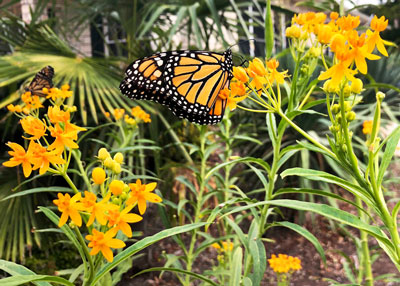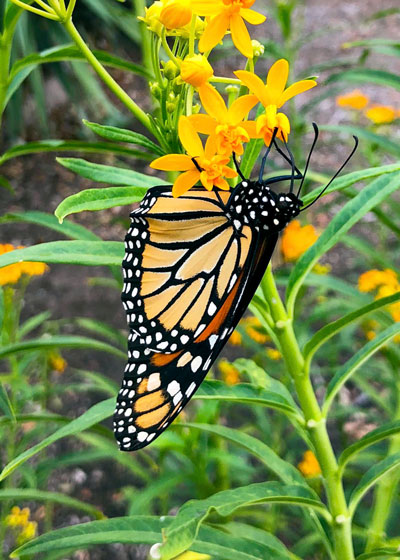“Super” Monarchs Flying Through Texas
My wife and I were delivering signed books to Gretchen at my office in McKinney earlier this week when I spotted monarch butterflies dancing around tropical milkweed plants in the parking lot. I grabbed my camera (OK, phone) and hustled over – only to find they were “super” monarchs.

Our daughter and 10-year-old grandson were driving by and saw us. Her first comment when she came over to see what all the fuss was about was, “Oh my gosh! They’re huge!”
You may be aware that monarch butterflies live in Canada and the United States from late spring through early fall. But then a generation of unusually large and strong monarchs develops. These big beauties live up to 8 months, and they’re capable of riding the fall upper air currents up to 3,000 miles from as far away as Canada clear to the mountains of Mexico where they overwinter in a small, carefully protected sanctuary.
Within that sanctuary, several hundred million monarchs mass together in just a few acres of forested mountainside. This ABC Nightline video tells the story clear to the top of the mountains. https://youtu.be/AN8-pNnvJ5s
These super monarchs will migrate back north once the warm days of spring return, but they do not make the entire trip. They stop part way north, many in Texas, to mate and produce a generation of normal monarchs that live for a shorter time. That generation continues the trek north, mates and produces another generation, and so on for another generation or two. By then it’s fall again and the process starts over again.

But for now I’ll just leave it by saying that super monarchs are migrating on the Central Flyway through Texas. Watch for them sampling nectar of milkweeds of all kinds, Gregg’s mistflower, goldenrod, Mexican bush sage and other fall-blooming plants.
Make your plans now. Next spring plant our native milkweeds, their caterpillars’ food source, and other nectar-rich plants to welcome them on their next journeys through Texas.
A few websites you might find of interest…
https://wattsupwiththat.com/2019/10/03/monarch-migration-2019/
https://www.nationalgeographic.com/news/2017/10/monarch-butterfly-migration/
https://www.fws.gov/refuges/news/FiveSuperStopsMonarchMigration.html
https://monarchbutterflygarden.net/8-things-know-monarch-migration/
